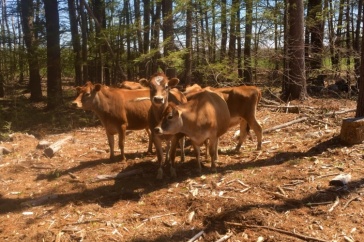
New UNH research studying the Soligas tribe in India and their relationship with the endangered Bengal tiger has found that allowing the two groups to share a habitat both protects the tiger population and saves money on conservation efforts like poaching policing. The work calls into question the controversial conservationist practice of removing local tribes from the habitats of endangered species.
The paper, Worshipping the Tiger: Modeling Non‑use Existence Values of Wildlife Spiritual Services, detailing the research by Shadi Atallah, UNH assistant professor of natural resources and the environment, and Adrian A. Lopes, assistant professor of economics at American University of Sharjah in the United Arab Emirates, was recently published in the academic journal Environmental and Resource Economics.
COLSA: Please describe your research.
Shadi Atallah: One quarter of carnivore species is critically endangered, endangered, or vulnerable. One of the most common conservation policies consists of establishing protected areas, which often involves the expulsion and exclusion of local tribes and communities that live in the same habitat as the species of conservation concern. The practice is controversial on human rights and ethical grounds, and its effectiveness has been mixed, but there has been no formal analysis of the consequences of this practice.

In this research, we studied the Bengal tiger that co-exists with the Soligas tribe in the Western Ghats of India. This tribe attaches significant spiritual value to the Bengal tiger. Using biological (e.g., tiger growth rate) and economic data (e.g., price paid for poaching tigers), we find that the expulsion and exclusion of the local tribe actually leads to tiger extinction, while securing the tribe’s rights to live in the same forest as the tiger leads to the recovery of the tiger population.
COLSA: Why is this research important?
Atallah: Conservationists have made claims that “tribal peoples are the best conservationists and guardians of the natural world” but to date there was no analytical framework to test this hypothesis. The results of this research support safeguarding the Soligas tribe’s right to live in their ancestral lands while achieving desirable conservation outcomes for the tiger.
In addition, we estimated the economic value of the spirituality derived by the tribe from the tiger. While it is controversial to put a monetary value on spirituality, this exercise makes it easier to avoid overlooking such values in conservation policies.
COLSA: What are the most interesting research findings from your work so far?
Atallah: From an application perspective, it is one of these few cases where you find a win-win-win solution, for the local tribes, wildlife, and society at large, by securing the tribe's property rights and avoiding less effective instruments such as poaching policing.
From a methodological perspective, we found a context where it is possible to put a monetary value on the spiritual services provided by wildlife; these values are overlooked to date in conservation policies and projects.
COLSA: Where does this fit into a larger area of research?
Atallah: This fits into a larger area of conservation economics that examines the different conservation policies and their impacts. It also fits into a larger area of non-market valuation that seeks to attach monetary values to nature's contributions to people.
-
Written By:
Sarah Schaier | College of Life Sciences and Agriculture

















































